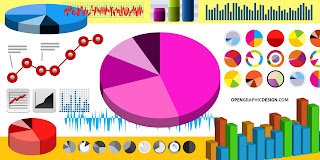VISUAL SYMBOLS
- are representations of direct reality, which comes in the form of signs and symbols.
- Like a picture a graph and all other visual symbols, are worth a thousand words, The proper use of visual symbols will contribute to optimum learning
KINDS OF VISUAL SYMBOLS
Visual symbols come in many forms – drawings, cartoons,
strip drawing (comic strip) diagram, map, chart and graph.
Drawings
A drawing may not be the real thing but better to have a
concrete visual aid than nothing. To avoid confusion, it is good that our
drawing correctly represents the real thing.
Cartoons
A fist rate cartoon tells its story metaphorically. The
perfect cartoon needs no caption. The less the artist depends on words, the
more effective the symbolism. The symbolism conveys the message.
Strip drawings
A sequence of drawings in a newspaper, magazine, etc.,
relating a humorous story or an adventure. These are commonly called comics or
comic strips.
Poster
Diagrams
- Posters abound in education libraries as decorative objects yet few libraries realize the educational potential of the poster. Posters are colorful, attractive learning media which can enhance the learning environment. This paper describes the value of posters in the educational setting, offers suggestions on selecting posters for learning, and includes examples of various types of learning posters.
- The posters were used as a means for students to communicate their accomplishments in implementation and evaluation of an innovative clinical project. Methods for development, exhibition, and evaluation of the poster project are described.
Diagrams
“It is any line drawing that shows arrangement and relations
as of parts to the whole, relative values, origins and development,
chronological fluctuations, distributions, etc.” (Dale 1969)
Types of Diagrams
1. Affinity Diagram
used to cluster complex apparently unrelated data into
natural and meaningful groups.
2. Tree Diagram
used to chart out, I increasing detail, the various tasks
that must be accomplished to complete a project or achieve a specific
objective.
3. Fishbone Diagram
It is also called cause and effect diagram. It is a
structured form of brainstorming that graphically shows the relationship of
possible causes and sub causes directly related to an identified effect /
problem. It is most commonly used to analyze work – related problems.
Charts
Is a diagrammatic representation of relationships among
individuals within an organization. We can have different types of chart:
1. Time Chart
is a tabular time chart that presents data in ordinal
sequence.
2. Tree or Stream Chart
Depicts development, growth and change by beginning with a
single course ( the trunk ) which spreads out to many branches or by beginning
with the many tributaries which then converge into a single channel.
3. Flow Chart
Is a visual way of charting or showing a process from
beginning to end. It is a means of analyzing a process. By outlining every step
in a process, you can begin to find inefficiencies or problems.
4. Organizational Chart
shows how one part of the organizational relates to other
parts of the organization.
5. Comparison and Contrast Chart
Used to show similarities and differences between two or
three things.
6. Pareto Chart
7. Gantt Chart
Is an activity time chart.
Graphs
Pictures that help us understand data. There are several
types of graphs. They are:
1. Circle or Pie Graph
Recommended for showing parts of whole.
2. Bar Graph
use in comparing the magnitude of similar items at different
ties or seeing relative sizes of the parts of a whole.
3. Pictorial Graph
make use of picture symbols.
4. Graphic Organizer
you met several graphic organizers in your subject,
principles of teaching.
Maps
Is a “ representation of the surface of the earth or some
part of it.”
Kinds of Maps
1. Physical Map
Combines in a single projection data like altitude,
temperature, rainfall, precipitation, vegetation and soil.
2. Relief Map
Has three dimensional representations and show contours of
the physical data of the earth or part of the earth.
3. Commercial or Economic Map
Also called product or industrial map since they show land
areas in relation to the economy.
4. Political Map
gives detailed information about country, provinces, cities
and towns, roads and highways. Oceans, rivers and lakes are the main features
of most political maps.




















Walang komento:
Mag-post ng isang Komento